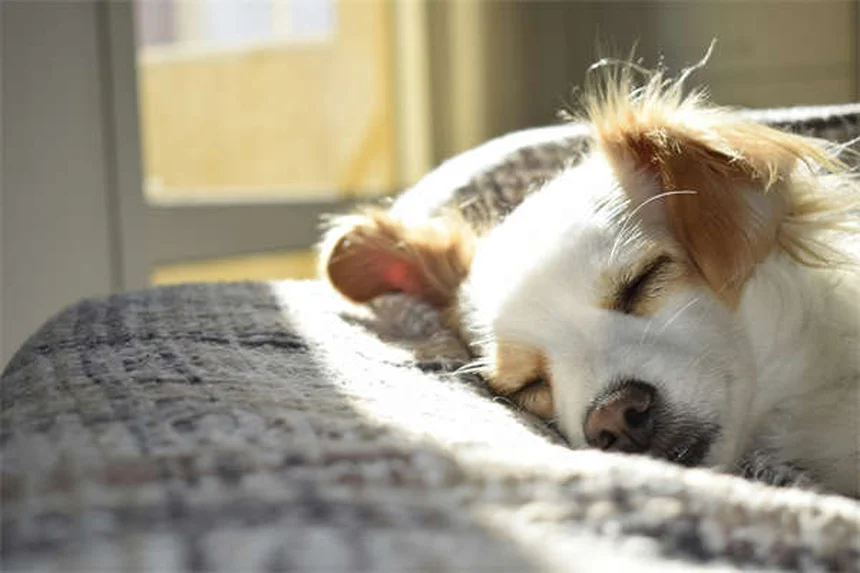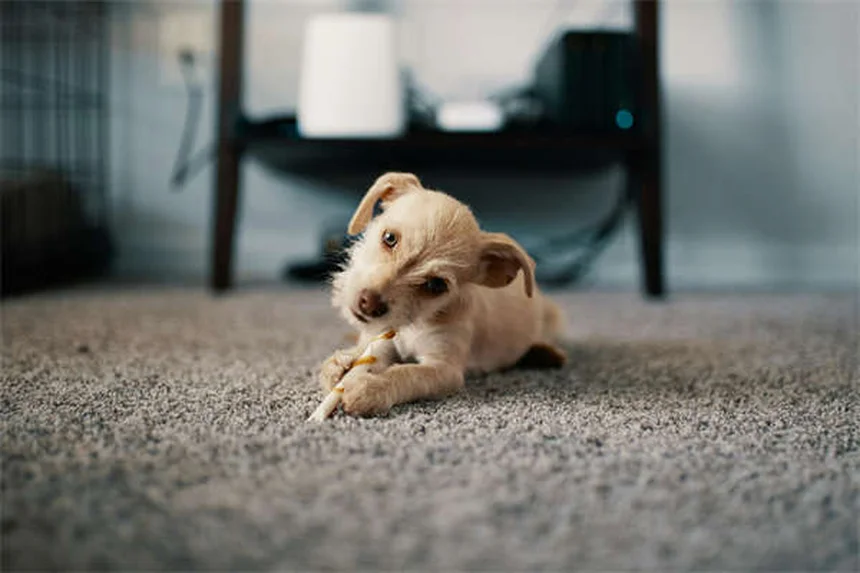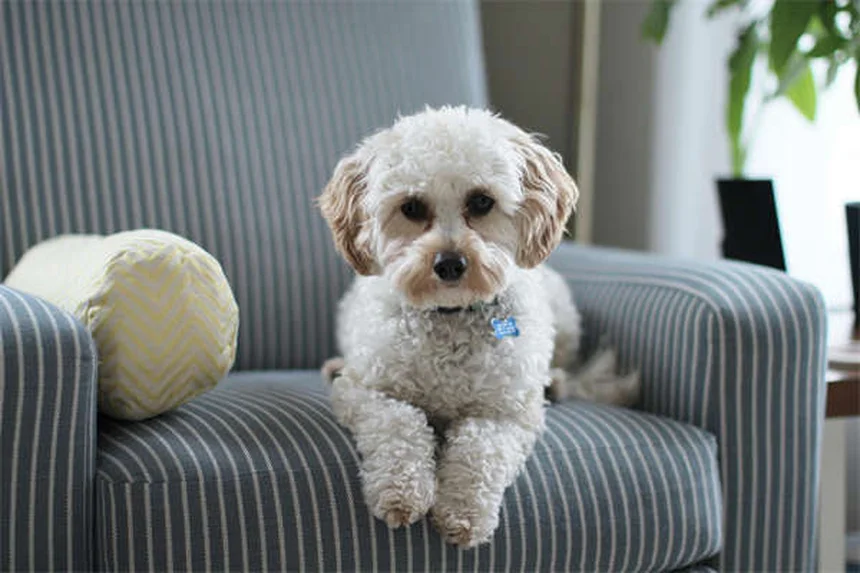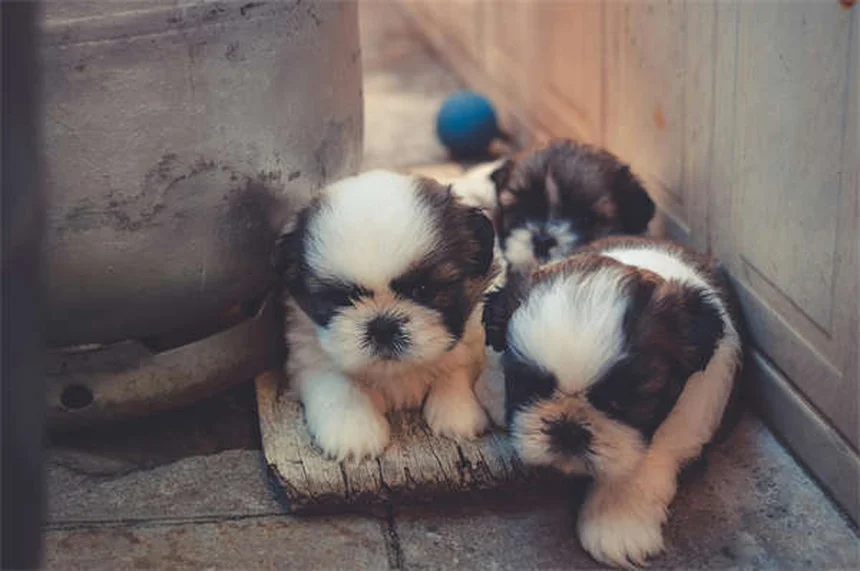Advertisement
What is positive reinforcement in dog training? The answer is simple: it's about rewarding good behavior to make it happen more often! I've been using this method for years, and let me tell you - it completely transformed how my dog Max behaves. Unlike punishment-based training that can scare your pup, positive reinforcement builds trust while teaching important skills.Here's the deal: when your dog does something you like (like sitting when asked), you immediately give them something they love - treats, praise, or playtime. The key is timing - that reward needs to come right after the good behavior. Think of it like a game show: correct answer = instant prize! This method isn't just kinder - studies show it's 15 times more effective than punishment at creating long-term behavior changes.But wait - there's more! Positive reinforcement isn't just about training tricks. It's a whole philosophy that strengthens your bond with your dog. Whether you're teaching basic commands or solving behavior issues, this approach makes learning fun for both of you. Stick with me, and I'll show you exactly how to make it work for your furry friend!
E.g. :7 Proven Ways to Keep Your Dog Calm During Air Travel
- 1、Understanding Positive Reinforcement
- 2、Positive vs Negative Reinforcement
- 3、The Positive Reinforcement Movement
- 4、Putting It Into Practice
- 5、Pro Tips From The Trenches
- 6、Beyond Basic Training
- 7、The Science Behind Positive Reinforcement
- 8、Choosing the Right Rewards
- 9、Training for Real Life
- 10、When Things Go Wrong
- 11、Training for Different Life Stages
- 12、FAQs
Understanding Positive Reinforcement
It's Not Just About Being "Positive"
Let me tell you something funny - when I first heard about positive reinforcement, I thought it meant being extra cheerful while training my dog! But here's the truth: positive in this context means adding something, not just being happy. It's like when you add sprinkles to ice cream - that's positive reinforcement for your taste buds!
Here's how it really works: when your dog does something you like, you immediately give them something they love. Could be treats, belly rubs, or playtime. The key is timing - you've got to deliver the good stuff right after the behavior happens. Think of it like a vending machine - good behavior goes in, treats come out!
Why This Method Rocks
You know what's awesome about positive reinforcement? It actually makes training enjoyable for both of you. Unlike some old-school methods that rely on fear or punishment, this approach builds trust. Your dog isn't just obeying - they're excited to participate!
Let me share a personal example. When I was teaching my golden retriever Max to sit, I'd say "sit," wait for his butt to hit the floor, then immediately say "yes!" and give him a piece of chicken. Within a week, he was sitting like a pro - not because he had to, but because he wanted that chicken! That's the power of positive reinforcement.
Positive vs Negative Reinforcement
 Photos provided by pixabay
Photos provided by pixabay
The Good Stuff: Positive Reinforcement
Here's a quick comparison table to show the difference:
| Type | What Happens | Example | Effect on Dog |
|---|---|---|---|
| Positive Reinforcement | Add something good | Treat after sitting | Happy, eager to repeat |
| Negative Reinforcement | Remove something bad | Stop pulling leash when dog sits | Relieved, but possibly stressed |
Now, here's something important: your dog gets to decide what's reinforcing. That steak might be amazing to your Labrador, but your neighbor's poodle might prefer a game of fetch instead. You've got to figure out what makes your pup's tail wag!
The Tricky Side: Negative Reinforcement
Ever wonder why some dogs seem nervous during training? Often it's because they're experiencing negative reinforcement. This isn't about being mean - it's about removing something unpleasant when the dog behaves. But here's the catch: the dog has to experience something bad first for this to work.
Picture this: you're pulling on the leash to make your dog sit, then release pressure when they do. The relief they feel reinforces the behavior. But ask yourself - is that really how you want to train your best friend? I know I don't!
The Positive Reinforcement Movement
More Than Just Training
Did you know positive reinforcement is actually a whole philosophy? It's not just about teaching tricks - it's about building a relationship based on trust and joy. Think about it - wouldn't you rather work for someone who rewards your good work instead of punishing mistakes?
Here's a shocking fact: studies show dogs trained with punishment are 15 times more likely to show fear-based behaviors. That's why the positive reinforcement movement is growing so fast - because it simply works better for everyone involved.
 Photos provided by pixabay
Photos provided by pixabay
The Good Stuff: Positive Reinforcement
I'll never forget the transformation I saw in my friend's rescue dog, Bella. When they first got her, Bella would cringe at the sight of a leash. But after six months of positive reinforcement training? That same dog now brings her leash to them when she wants a walk! That's the power of this approach.
Putting It Into Practice
Step-by-Step Training
Let me walk you through exactly how to use positive reinforcement:
- Choose a simple command (like "sit")
- Wait for your dog to do it naturally
- Immediately mark the behavior with a "yes!" or clicker
- Follow with a high-value reward
- Repeat until your dog connects the dots
Remember - if the behavior isn't happening more often, you're doing something wrong. Maybe your timing is off, or maybe your "reward" isn't actually rewarding to your dog. Time to experiment!
Common Mistakes to Avoid
We've all been there - thinking we're doing positive reinforcement when really, we're just confusing our dogs. Here are some classic blunders:
Mistake #1: Rewarding too late. If you give the treat 10 seconds after your dog sits, they might think they're being rewarded for standing back up!
Mistake #2: Using boring rewards. That dry kibble might not cut it - try small pieces of real meat or cheese for important training.
Pro Tips From The Trenches
 Photos provided by pixabay
Photos provided by pixabay
The Good Stuff: Positive Reinforcement
Here's a secret: training should feel like playtime! Keep sessions short (5-10 minutes max) and end on a high note. If you're getting frustrated, call it quits - your dog can sense your mood.
Want to know my favorite trick? I keep a "training journal" to track progress. It's amazing to look back and see how far we've come. Last month Max couldn't "stay" for 10 seconds - now he can hold it for two minutes!
Troubleshooting Guide
Having trouble? Let's solve some common issues:
Problem: My dog won't respond outside
Solution: Start in a boring room, then gradually add distractions. Rome wasn't built in a day!
Problem: My dog only listens when I have treats
Solution: Start mixing in random rewards - sometimes treats, sometimes praise, sometimes play. Keeps them guessing!
Beyond Basic Training
Building a Lifetime Bond
The beautiful thing about positive reinforcement is that it doesn't stop at obedience training. You can use these principles every single day to strengthen your bond. Notice your dog lying quietly instead of begging at the table? Toss them a treat! They'll quickly learn what behaviors earn rewards.
I've found that dogs trained this way develop this amazing "can-do" attitude. They're not just obeying commands - they're actively trying to figure out what makes you happy. That's when you know you've really succeeded!
Taking It To The Next Level
Ready for some advanced applications? Try shaping complex behaviors by rewarding small steps toward the final goal. Want your dog to turn off the light? First reward them for looking at the switch, then touching it, then bumping it - until finally they're flipping it with their nose!
The possibilities are endless when you approach training with creativity and positivity. Remember - every interaction with your dog is a training opportunity. Make them count!
The Science Behind Positive Reinforcement
How Dog Brains Learn Best
Ever wonder why positive reinforcement works so well? It's all about how canine brains are wired! Dogs, just like us, have a reward center in their brains that lights up when they experience something pleasurable. When you pair a behavior with that good feeling, their brain literally rewires itself to want to repeat that action.
Here's a cool fact: dopamine, the "feel-good" chemical, floods your dog's system when they get that tasty treat after sitting. This creates a powerful memory connection between the action and the reward. It's like when you smell cookies baking and immediately remember grandma's kitchen - except for your dog, it's "sit" equals chicken!
Timing Is Everything
You might be surprised to learn that dogs live in a 2-second world. That's their window for connecting actions with consequences. If you wait too long to reward, you might accidentally reinforce the wrong behavior. Picture this: your dog sits, then stands up to sniff your pocket, and THEN you give the treat. Guess what behavior you just reinforced?
That's why professional trainers use markers like clickers or the word "yes!" - it bridges that gap between behavior and reward. Think of it like taking a snapshot of the exact moment your dog did something right. I always tell my students: "If you're fumbling for treats, you're already too late!"
Choosing the Right Rewards
Finding Your Dog's Currency
Not all rewards are created equal! What motivates your dog might not work for mine. Here's a quick test you can do: line up different treats and see which one your dog chooses first. That's their high-value reward - save these for important training moments!
Some dogs go crazy for food, while others would trade a steak for a game of tug-of-war. My neighbor's border collie? She'd do backflips for a chance to chase a tennis ball. The key is to discover what makes your dog's tail wag the hardest.
The Reward Hierarchy
Let's break down reward values from basic to super-charged:
| Reward Level | Examples | Best Used For |
|---|---|---|
| Everyday Rewards | Kibble, verbal praise, petting | Maintaining known behaviors |
| Medium Value | Commercial treats, short play sessions | Learning new commands |
| High Value | Real meat, cheese, favorite toy | Difficult distractions or new environments |
Remember that time you worked extra hard for a bonus at work? That's how your dog feels about high-value rewards. They'll go the extra mile for that special something!
Training for Real Life
Beyond the Living Room
Here's where many owners get stuck - their dog performs perfectly at home but forgets everything at the park. Why does this happen? Because dogs don't generalize well. To them, "sit" in your kitchen might as well be a completely different command than "sit" at the vet's office.
The solution? Practice everywhere! Start in your quiet living room, then move to the backyard, then the front yard, then quiet streets, and finally busy areas. I call this the distraction ladder. Each step up means going back to easier commands and higher-value rewards. Patience pays off!
Emergency Recall Training
What if I told you there's one command that could literally save your dog's life? That's the emergency recall - a special "come" command that means drop everything and run to me because something amazing awaits.
Here's how I trained mine: I picked a unique word ("banana!"), only used it for this purpose, and always rewarded with something extraordinary like a handful of hot dog pieces. Now when I shout "banana!" at the dog park, my lab comes sprinting while other dogs keep playing. It's like having a canine emergency brake!
When Things Go Wrong
Reading Your Dog's Signals
Did you know your dog is constantly telling you how they feel about training? Watch for these signs:- Happy learner: Bright eyes, wagging tail, leaning forward- Confused: Head tilting, hesitant movements- Stressed: Yawning, lip licking, looking away
If you see stress signals, it's time to make the exercise easier or take a break. Pushing through will only create negative associations. Remember - we want our dogs to love training, not endure it!
The Power of Management
Sometimes the best training is preventing mistakes in the first place. If your dog keeps jumping on guests, try this:1. Keep them on leash when visitors arrive2. Ask for a sit before any greetings3. Reward calm behavior4. Gradually increase freedom as they improve
This is like putting training wheels on a bike - it sets your dog up for success while they're learning. I used this method with my excitable puppy, and now at 2 years old, he automatically sits when the doorbell rings. Worth every minute of practice!
Training for Different Life Stages
Puppy Foundations
Starting with a puppy? You've hit the jackpot for shaping good habits! Puppy brains are like sponges, soaking up information. Focus on:- Socialization (positive experiences with people, dogs, environments)- Bite inhibition (teaching gentle mouthing)- Basic manners (not jumping, settling calmly)
Pro tip: Carry treats everywhere during the first few months. Every new experience is a training opportunity! I still remember the looks I got when rewarding my puppy for calmly watching a skateboarder - but it worked!
Senior Dog Training
Think old dogs can't learn new tricks? Think again! While they might learn slower, senior dogs can absolutely benefit from training. Just adjust your expectations:- Shorter sessions (5 minutes max)- More frequent breaks- Softer rewards (maybe soaked kibble instead of hard treats)- Focus on comfort commands like "step up" onto furniture
My 12-year-old lab still learns new things - we recently taught him to "go to your mat" when his joints are stiff. Training keeps his mind sharp and our bond strong!
E.g. :I don't understand how only positive reinforcement can work. : r ...
FAQs
Q: What exactly counts as positive reinforcement for dogs?
A: Great question! Positive reinforcement can be anything your dog loves that you give immediately after good behavior. The most common rewards are small, tasty treats - but don't limit yourself! My dog Max goes crazy for pieces of cooked chicken or cheese. Some dogs prefer play rewards like fetch or tug-of-war. Others just want enthusiastic praise and belly rubs. The key is figuring out what makes your dog's tail wag the hardest. Pro tip: rotate different rewards to keep training exciting!
Q: How quickly do I need to reward my dog after good behavior?
A: Timing is everything in positive reinforcement training! You've got about 1-2 seconds to deliver that reward after the desired behavior. Any longer, and your dog might not connect the dots between their action and the treat. I use a clicker or say "yes!" the exact moment my dog does something right - this "marks" the behavior, then I have a couple extra seconds to grab the treat. Think of it like taking a photo of the perfect moment - click when you see the behavior, then reward!
Q: Can positive reinforcement work for serious behavior problems?
A: Absolutely! I've seen positive reinforcement work wonders for everything from leash pulling to separation anxiety. The secret is breaking big problems into small, manageable steps. For example, if your dog jumps on guests, start by rewarding them for keeping all four paws on the floor when someone enters. Gradually increase the difficulty as they improve. For serious issues, I recommend working with a certified positive reinforcement trainer - they can create a customized plan that keeps everyone safe while building better habits.
Q: Won't my dog only obey when I have treats?
A: This is a common concern, but easily solved! The trick is to gradually make rewards unpredictable - sometimes give treats, sometimes just praise, sometimes a quick game. We call this "variable reinforcement," and it actually makes behaviors more reliable long-term. Start by rewarding every correct response, then switch to rewarding randomly. Eventually, your dog will keep doing the behavior hoping for that occasional jackpot reward - just like people keep playing slot machines!
Q: How long should positive reinforcement training sessions last?
A: Keep it short and sweet! For most dogs, 5-10 minute sessions work best - any longer and they lose focus. I like to do several mini-sessions throughout the day rather than one long session. Always end while your dog is still having fun - quitting on a high note leaves them excited for next time. Remember, training should feel like playtime, not homework. If you're getting frustrated, it's time to take a break - your dog can sense your mood!







